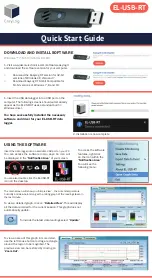
© National Instruments
|
6-5
Using an Internal Source
To use DO Sample Clock with an internal source, specify the signal source and the polarity of
the signal. The source can be any of the following signals:
•
AI Sample Clock (ai/SampleClock)
•
AI Convert Clock (ai/ConvertClock)
•
AO Sample Clock (ao/SampleClock)
•
Counter
n
Internal Output
•
Frequency Output
•
DI Change Detection Output
Several other internal signals can be routed to DO Sample Clock through RTSI. Refer to
Device
Routing in MAX
in the
NI-DAQmx Help
or the
LabVIEW Help
for more information.
Using an External Source
You can route any of the following signals as DO Sample Clock:
•
PFI <0..15>
•
RTSI <0..7>
•
PXI_STAR
•
Analog Comparison Event (an analog trigger)
You can generate samples on the rising or falling edge of DO Sample Clock.
You must ensure that the time between two active edges of DO Sample Clock is not too short. If
the time is too short, the DO waveform generation FIFO is not able to read the next sample fast
enough. The DAQ device reports an overrun error to the host software.
Routing DO Sample Clock to an Output Terminal
You can route DO Sample Clock out to any PFI terminal. The PFI circuitry inverts the polarity
of DO Sample Clock before driving the PFI terminal.
I/O Protection
Each DIO and PFI signal is protected against overvoltage, undervoltage, and overcurrent
conditions as well as ESD events. However, you should avoid these fault conditions by
following these guidelines:
•
If you configure a PFI or DIO line as an output, do not connect it to any external signal
source, ground, or power supply.
•
If you configure a PFI or DIO line as an output, understand the current requirements of the
load connected to these signals. Do not exceed the specified current output limits of the
DAQ device. NI has several signal conditioning solutions for digital applications requiring
high current drive.
Содержание PCI-6281
Страница 1: ...PCI 6281...
















































